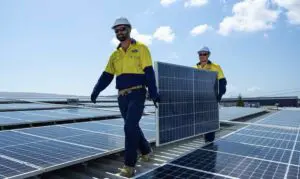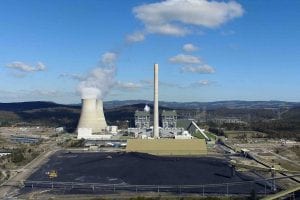
As the United States works to revitalize coal and other fossil fuel industries, China is reaffirming its efforts towards renewable energy, investing considerable resources in expanding solar power and clearing hurdles for businesses to shift towards sustainable energy options.
China’s National Energy Administration (NEA) announced on Thursday that the country would “ease the burden” on renewable power generators, ordering local governments to give priority access and to “promptly accept” such companies.
Guaranteed purchase agreements must also be fortified and local governments failing to meet the standards laid out by the NEA will face repercussions.
That announcement comes only two days after the NEA announced that China installed nearly 10 gigawatts (GW) of new solar photovoltaic capacity in the first quarter of 2018 — a 22 percent increase over the same time period last year.
The country’s endeavors have global implications for consumers. Solar panels are becoming cheaper and cheaper thanks in large part to China, which has oversupplied the market and driven down costs in the process. China is also reportedly eyeing the electric bus market, something that could similarly incentivize investors globally.
China’s efforts stand in stark contrast to those of the United States. President Trump announced that the country would withdraw from the Paris climate agreement last June, arguing that the deal put the United States at a disadvantage while benefiting other countries.
The prospect of a U.S. exit has placed pressure on countries like China to take on new climate leadership roles, with or without U.S. assistance.
Following Trump’s announcement, China reaffirmed its commitment to the Paris agreement’s targets, vowing that the nation would share responsibility in global sustainable development efforts. As the world’s largest emitter of greenhouse gases (closely followed by the United States), China’s role in combating climate change is largely seen as critical.
The country seems to be rising to the occasion: Despite ongoing investments in coal, China is also the world’s largest investor in renewable energy, according to a 2018 report from the U.S.-based Institute for Energy Economics and Financial Analysis (IEEFA). That’s in keeping with trends from past years.
China passed the United States in renewable energy investment in 2009 by a mere $14 billion; in the time since, that gap has increased dramatically. In 2017, more than half of global renewable energy investment (nearly $280 billion) came from China. To put that into context, for every $1 the United States put into renewable energy last year, China spent $3.
Much of that investment went into solar power, followed by wind energy. According to Quartz, 26 percent of all national electric production came from renewables, as opposed to the global average of 12 percent.
Developing countries more broadly are proving key to driving investment in renewables. Brazil and India joined China to account for 63 percent of all investment (around $143.5 billion) in renewable energy across the world in 2017.
That’s in stark contrast to Western nations: the United States and Europe account for more than 40 percent of all post-industrial era emissions, but collectively invested only a little over $80 billion in renewable energy in 2017, according to a 2018 U.N. report. China alone invested $126.6 billion.
But China still faces slowing demand for renewable energy domestically, along with rising U.S. trade issues as Trump weighs sweeping tariffs. The White House announced a 30 percent tariff on Chinese solar panels in January in an effort to retaliate against China’s efforts to corner the world market.
And economists have speculated that the industry is likely to take a hit this year. The Beijing-based Asia Europe Clean Energy (Solar) Advisory (AECEA) has projected that the country will install between 40 and 45 GW of solar capacity by the end of the year — down from 53 GW in 2017.
Source: ThinkProgress. Reproduced with permission.








